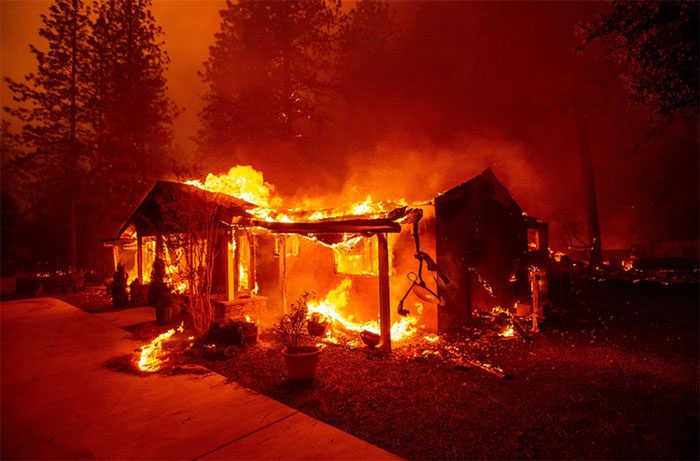After a series of severe wildfires in Northern California, scientists examined the burned soil and discovered it was laden with a carcinogenic metal known as hexavalent chromium.
According to NBC News, a new study published on December 12 in the journal Nature Communications reveals that the intense heat from severe wildfires can transform benign chromium, commonly found in California soil, into a notorious carcinogen: chromium-6.

A house burned in Paradise, California, in 2018 – (Photo: AFP).
In its trivalent form, chromium is relatively harmless and abundant. However, the new research indicates that temperatures exceeding 199°C can catalyze chemical reactions that convert chromium-3 into the extremely dangerous chromium-6.
This new finding adds an important insight: wildfires raging in natural areas can also release smoke containing toxic metals into the atmosphere.
The study’s author, Scott Fendorf, a professor of Earth System Science at Stanford University, noted that wildfires tend to burn hotter and longer, making it more likely to turn harmless soil into carcinogenic dust and ash.
According to the International Agency for Research on Cancer, chromium-6 is a Group 1 carcinogen, meaning it can cause cancer in humans. Exposure to large amounts of chromium-6 has been linked to lung cancer.
In a study involving mice exposed to chromium-6 in drinking water, some developed tumors in the mouth, small intestine, and liver over two years.
Researchers visited wildfire sites along Northern California’s coastline, including the 2019 Kincade fire and the 2020 Hennessey fire, to search for chromium-6.
They collected a total of about 38 soil cores from both burned and unburned forest locations.
As a result, they found chromium-6 in areas where wildfires had erupted intensely, especially in shrubs growing in regions with relatively metal-rich “hard” soil.
The researchers believe that chromium-6 can travel in wildfire smoke, dispersing like dust after the fire has extinguished and persisting for months afterward.
In 2023, the California Air Resources Board approved regulations to phase out chromium-6 at industrial facilities.
|
Chromium-6 is a highly toxic pollutant. It is the central chemical in the class-action lawsuit depicted in the film Erin Brockovich about chromium contamination in water in Hinkley, California – where this metal was used to prevent corrosion in cooling towers at a natural gas compression station. Approximately 600 residents of Hinkley won the initial lawsuit against Pacific Gas & Electric Co. (PG&E), receiving $333 million in compensation. According to the AP news agency, PG&E later paid an additional $315 million to settle other lawsuits also related to chromium-6. |



















































